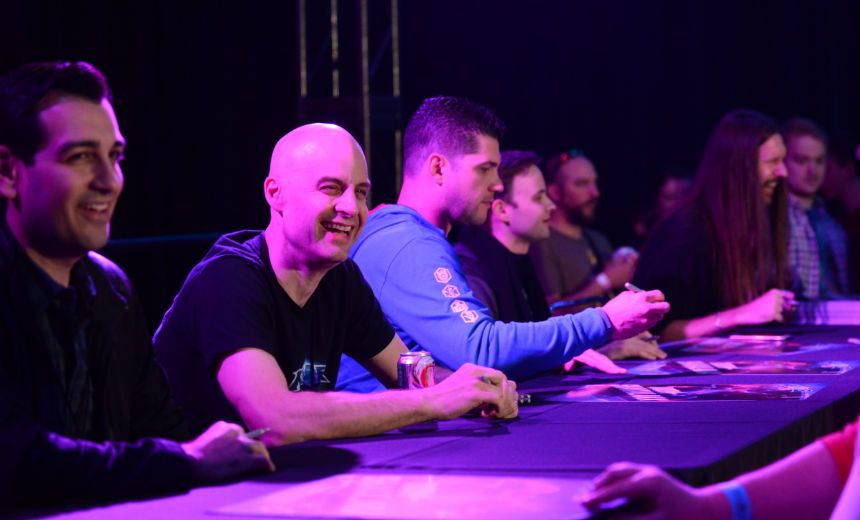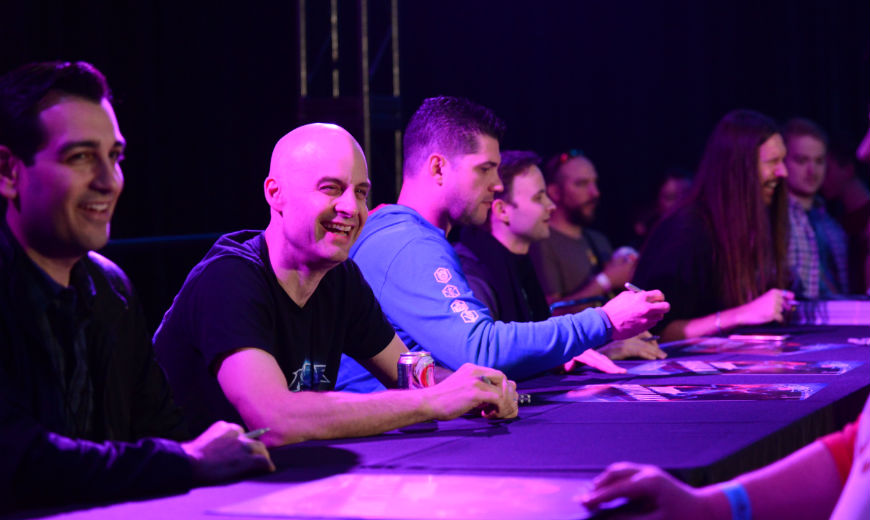
I was sincerely looking forward to the chance to talk Heroes of the Storm with Dustin Browder. It isn't the first time I've spoken with him, and every time I do I hesitate to even call it an interview. Sure, I asked questions, but his answers were so informative and filled with energy it often felt like I was sitting in on a game design master class session.
But, I was there with a job and it was important not to get lost in how fun it is to hear Dustin tell stories about his beloved Heroes of the Storm. I learned a ton in our talk and I'm glad I can share it with everyone else:
On Tracer
- When developing Tracer to join the Heroes of the Storm roster, the team had some very clear goals that had to do with her FPS background.
- The first plan was to try and take Tracer from Overwatch and replicate her perfectly to fit Heroes of the Storm. After she was transferred into the Nexus, the team would make the necessary adjustments.
- The first problems stemmed from her balance. For example, Tracer used to have her base Rewind ability heal all damage taken, as it does in Overwatch. That was simply way too powerful in Heroes of the Storm and was only balanced as a level 20 Storm talent.
- Tracer has required an exhaustive amount of testing and the team had to give Tracer a "ferociously low health pool" to make any of her abilities even close to balanced.
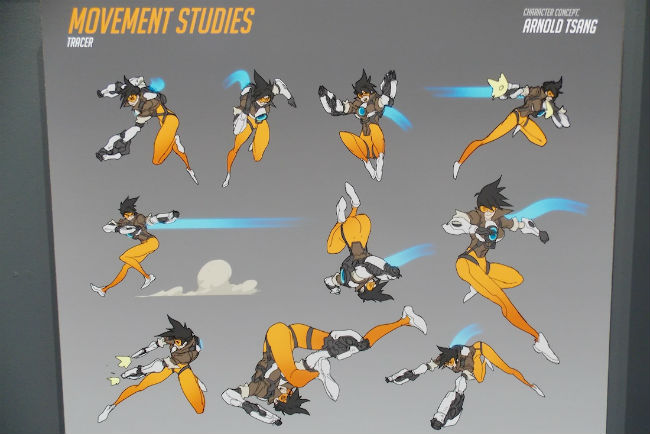
- Tracer is very slippery. Dustin told a story of him in a duel against Tracer as Jaina and how important the Ice Block talent became. It was always a powerful choice, but playing against Tracer forced him to re-think the way he used it. He learned to summon Water Elemental and Ice Block immediately, forcing Tracer to contend with the Water Elemental which she can't do efficiently.
- As Jaina, he was casting Blizzard defensively and taking different talents just to stay alive vs. Tracer. He said it felt good to re-look at old talent choices and that is the goal for all new heroes and hero updates: to encourage a changing environment.
- Even if you never buy Tracer, the game has changed with her being a part of it. You will still enjoy playing against Tracer.
- Tracer in Overwatch is easier to play than Tracer in Heroes of the Storm.
On Hero Balance
- What the team has learned from Heroes is that a fairly decent amount of balance testing is only possible once the Heroes get into the hands of the players.
- Dustin Browder loves his balance team and relies on them for a great many things. For example, he contrasts the difference between balancing Starcraft 2 and Heroes of the storm.
"Whenever a hero designer is given a hero, the rule is 'be true to that character'. If you have been given Valla, make a Valla. If you have been given Uther, make an Uther. If you have been given Cho'gall, you better make a Cho'gall."
- Tons and tons of cool ideas never made it into Starcraft II. That is the nature of the RTS genre; a cool idea is only valuable if it can be balanced.
- In Starcraft 2, the question was always "can it be balanced?" The team focuses everything on balance and, with a game like Starcraft 2, you can make that balance extremely tight.
- With Heroes of the Storm, that mindset had to be preserved, but also expanded so cool ideas aren't sacrificed. They focus on cool ideas first, then decide how to balance them.
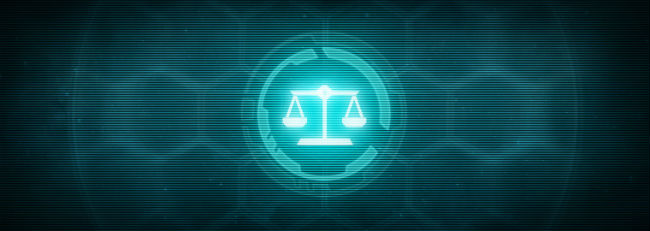
- The Heroes balance team aims for 50/50 and there has never, ever, been an initiative to release broken heroes or heroes that are "worth the gold purchase."
- No one on the balance team is concerned that a player is happy with their purchase on day one: their goal is to aim for that sweet 50/50 win rate. They don't aim for 55 or 60 with plans to scale back later.
- In the first week, even a balanced Hero will look below a 50 percent win rate because players just aren't good at the hero. Like clockwork, when a hero is released every player with a hero level of 8 or higher usually hovers around 50 percent or above win rate. Everyone else is under 50 percent.
- Some of Heroes balance designers play at the grand master level. They are extremely skilled and, whenever Dustin is in a playtest group with them, he has to focus on not compromising the test by overly feeding or otherwise losing. Mixing skill levels when testing is vital.
Balance Updates
- Dustin doesn't know where the meta will be and that is ok. Sometimes, the community doesn't know either. For example, all of Blizzard's internal testing shows that Bloodlust is criminally underrated. They have to take cases like that and other examples into consideration when updating Heroes.
- The meta represents players collective thoughts, not always the strictly most powerful heroes. For example, there was a time in Starcraft II's balance history where a very powerful Zerg strategy was reasonably countered by the use of Protoss Warp Prism. But, because no one thought of it or liked that style of play, it wasn't used. Even though it countered the strategy everyone complained about, it just wasn't popular.
- The takeaway is that what the balance team thinks (and sometimes knows) to be good simply isn't what players always want to do. Blizzard isn't trying to manipulate the meta, but they will in extreme cases.
- Dustin and the other Heroes creative leads play the game every night for at least 3 hours of their own time. They are seeing exactly what the players are seeing. The same frustrations casual players endure are things they endure as well. This, and responding to tweets, AMA's and "living" the game is a core philosophy on the team.
Does the game need more vanilla heroes?
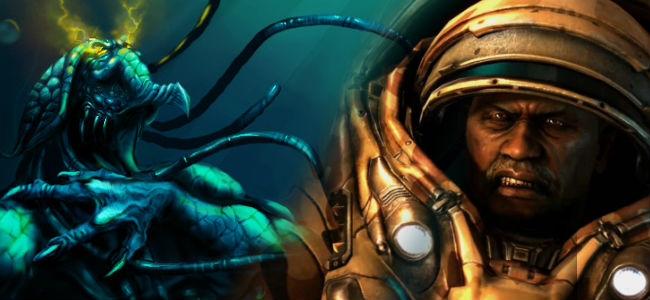
Fenix and Warfield from the Starcraft universe. It's difficult to visually differentiate these Heroes from "just another Protoss" or "just another marine" in a game like Heroes that demands visually unique characters recognizable in an instant.
- The process of choosing which heroes created is either "creative and wonderful" or "frightening and terrible". There are so many negotiations that must be made.
- For example, Warfield and Fenix are team favorites and Dustin can't wait to include them in the game. But the art team needs heroes to have different shapes. Fenix looks like Artanis, who already looks like Tassadar. Warfield looks like Tychus who already looks like Raynor.
- The Overwatch team wants to include their characters. What about the Diablo team? Haven't we just had a Starcraft hero? These concerns always have to be considered.
- Dustin is leading the team towards skill-based heroes. We saw the beginning of it with Li-ming and the feedback from the community has been positive. Dustin wants more "mean" heroes that aren't trying to hold anyone's hand when playing as them.
On Battle Grounds
- Dustin and his team want to take chances and create unique battlegrounds. The goal is to have the battlegrounds affect which heroes you want to choose and which talents you want to choose on them.
- As a company, Blizzard creates lifestyle games: games that you can play forever. Heroes of the Storm is new but still has to hold up to that scrutiny. That means that everything the team does has to add variety to the gameplay. When Heroes becomes predictable, things need to change.
- Dustin likened this need to a Starcraft example. He explained that, in Starcraft, the Zerg rush needs to exist. Even if no one ever uses it, that rush tactic's existence makes it impossible to predict how a game will unfold. Some games end in 8 minutes and are intense micro battles between a few units. Other games are epic battles with late game units and mass expansions. When you play Starcraft, you never know what you will get because of the Zerg rush phenomenon.
- Battleground diversity encouraging different hero usage has the potential to bring that level of replay value to Heroes of the Storm.
- The ideal environment is that certain heroes do really well on certain battlegrounds. Players should be rewarded for knowing how to play many heroes well. Certain talents should be very good on some battleground, and maybe not as good on others.
On Talents
- There are two types of talents in Heroes: Power talents and Utility talents.
- Power talents help you do things your hero is supposed to do better. Supports have power talents that make them heal more, where warriors have power talents that help them absorb more damage.
- Utility talents help you gain more information, control the map, or otherwise interact with the battleground or your team in some favorable ways.

When explaining power vs. utlity to me, Dustin gave the heroic options of Lt.Morales as the perfect example.
- Dustin feels that sometimes the best way to balance talent choices is by putting "like choices next to like choices" For example, Lunara's all Wisp talents at level 4 is a choice between what type of utility you need. If just one of those choices was a power choice and not a utility choice, players would choose the power talent every time and they would be right to do so.
- It's not ok to have talents that are never picked. But it is ok to have talents that are "never pick unless X or Y"
Miscellaneous
- Dustin isn't surprised with how bans have affected Hero league. He thinks the community needs a lot more time to learn how to ban correctly. His biggest fear with regards to bans in Hero league is that all it does is extend the hero pool by two heroes. He thinks it may not be disruptive enough.
- When prodded about the possibility of more classic Blizzard characters like The Lost Vikings, heroes from Rock N' Roll Racing, and Blackthorne were said to be very possible. Dustin even admitted having a little design for the Rock N' Roll racing character, Snake Sanders sitting around somewhere in a note. It included details like Snake Sanders never speaking, instead having the signature announcer speak in his place. With a laugh, he assured that nothing is being worked on at the moment.
- Dustin likes the idea of adding clans or guilds into the game and thinks it would be hugely successful and good for Heroes of the Storm. He wants to give players the ability to self-organize before they enter a queue, because everyone goes into a game with a different desired outcome. Some people want to try-hard and that is good. Some people want an extremely casual experience. The future of Heroes is about giving players the tools to find which group they want to play with.
- The Heroes design team is going to keep working on Kael'Thas. He has a lot of challenges for us. A lot of the stuff they are doing with the game makes it hard for a Hero like Kael'thas to either be insanely powerful or too weak. The team has put so much work into Kael'thas that they won't settle for anything but a perfectly balanced fire mage.
Follow us on Twitter @GosuGamersHotS for more Heroes of the Storm news and coverage from around the world.

